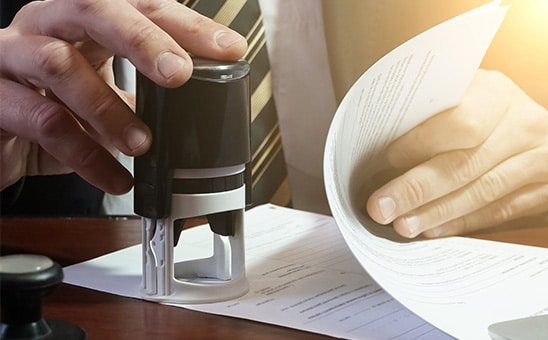Getting a business trademark is important for protecting your business’s intellectual property. It’s also vital to maintain the rights to your services, products and branding and prevent other companies from infringing on your ideas.
The Intellectual Property Office (IPO) in the UK enables trademark registration and renewal, granting the proprietor the sole authority to use it in relation to designated goods and services they provide.
This UK business guide will elaborate on registering a trademark and the measures necessary for safeguarding the intellectual property rights of your business.
Without further ado, let’s begin!
Why Do You Need A Trademark?
Before we get into the details of how to get a trademark, it’s important to understand why you need a business trademark to protect your interests.
Businesses have specific branding, such as keywords, logos and designs that represent their product and help customers to recognise them.
Case Study: You would recognise that Amazon sells a product because of their famous orange arrow logo. When you see this printed on a parcel box, you know which service has delivered it. This is a great example of a trademark feature, and because Amazon owns this trademark, if another parcel company attempted to use a similar logo, Amazon would be entitled to make a claim against them for trademark infringement.
If you do not trademark your branding, you may end up in a situation where someone takes it for themself and profits from your hard work, as consumers could easily mistake their product for yours.
#1 Conduct a Trademark Search
Conducting a trademark search is an important first step for anyone filing a trademark application. Trademark searches ensure that another company hasn’t already taken your trademark and that you won’t be infringing on anyone else’s property by claiming it.
The intellectual property office has a database which allows you to search other trademarks online to find out if there are any in use which may invalidate your claim.
Your trademark must be unique, as two similar trademarks might confuse consumers.
It’s also necessary to check the relevant classes of goods and services to guarantee no conflicting trademarks in those classes.
You can conduct these searches yourself using free online portals. However, it is often best to get the help of a professional trademark lawyer to help you conduct high-quality research at a faster rate. A professional will have better, faster access to the information you need – saving you significant time on your application.
If you don’t properly check for existing and similar trademarks, your application might be rejected, so ensuring you’ve conducted high-quality checks is important.
Step 2: File a Trademark Application
Once you have determined that your trademark is available and original, your next step will be to file your application. You can do this online with the IPO or send a physical form through the post. It is generally much quicker to apply online, and you will need to include details such as:
- The name and address of the applicant/business
- A representation of the trademark
- The goods and services that the trademark will be used for
- The class or classes of goods and services under which the mark will be registered. It’s crucial to ensure the mark is filed in the correct class or classes, as this will determine the scope of protection the mark will receive.
To determine which class or classes are appropriate for your mark, you can use the IPO’s trademark classification tool to help you.
Step 3: Examination and Publication
After your application has been filed, it will be examined by the IPO team to ensure that it meets all the requirements set for trademark registration.
This includes assessing the mark’s distinctiveness, checking for conflicts with existing trademarks and ensuring that the trademark doesn’t present offensive or harmful ideas.
If the IPO finds any issues with the application, it can issue an examination report to the applicant, allowing them to address the issues and argue their case. These will be small issues that can easily be resolved. If the application conflicts heavily with the guidelines, it may be rejected.
Assuming there are no issues with the application, the IPO will publish it in the UK Trademarks Journal, a general trademark register. This allows anyone who may have objections to the registration to oppose it within two months of publication.
Step 4: Registration and Renewal
There is a two-month opposition period in which the IPO may raise issues with your trademark application. However, you’ll be ready to register a trademark if this passes by with no issues.
Your trademark will be registered in the UK for ten years after the IPO confirms it. After this, you will have the option to renew it indefinitely in additional 10-year periods.
The renewal process will involve paying a renewal fee (decided by the IPO) and confirming that the mark is still in use.
Conclusion,
In conclusion, registering a trademark in the UK can be straightforward if you follow the earlier steps.
So long as you conduct a thorough background search, file a complete application and address any issue that might arise during the examination process – you can massively increase your chances of obtaining a registered trademark.
We hope this guide on registering a trademark has helped teach you the basics of obtaining a trademark. If you’re applying for a business trademark, we wish you the best of luck!
